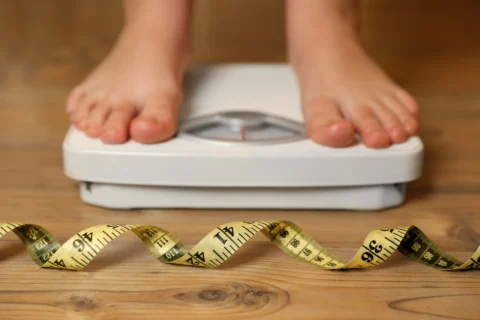Avoiding Hormone Pellet Problems: Preventing Extrusion and Infection
If you suspect your hormone pellet (used for hormone replacement therapy) has come out, contact your healthcare provider immediately as this can disrupt your hormone balance and may require replacement or alternative treatment options.
Hormone pellets offer a convenient way to balance hormones during menopause, combat low testosterone, and address other hormonal issues.
These tiny implants release steady doses of hormones over several months, providing noticeable benefits. While the procedure is generally safe, sometimes complications can occur. One understandably concerning issue is when a hormone pellet unexpectedly comes out.
If you think your pellet may have been expelled, don’t panic!
While it’s important to consult your healthcare provider immediately, it’s helpful to be informed about why pellet extrusion happens and what steps you should take.
How Can I Tell if My Hormone Pellet Came Out?
Understanding the signs that a hormone pellet may have come out is crucial for taking timely action. Here’s a closer look at the common indicators:
- Visual Changes:
- Small bump or protrusion near the site: This might happen if the pellet starts to push its way through the skin. Observe for something as subtle as a tiny pimple-like bump near the insertion area.
- Reopened incision: Occasionally, the skin surrounding the healed insertion site might open slightly, potentially exposing part of the pellet.
- Physical Sensations:
- Tenderness or itching: This may be a subtle feeling at first, but might increase over time.
- Discomfort or pain: A persistent low-grade ache or a feeling of pressure could indicate that the pellet is no longer in its intended position.
- Return of Symptoms:
- Menopause symptoms: The sudden return of hot flashes, night sweats, or mood swings after initial improvement could signal that your hormone levels are dropping.
- Low testosterone symptoms: Keep an eye out for a return of fatigue, decreased energy, or a decrease in libido.
It’s Not Just a Feeling – Other Signs to Watch For
- Soreness after initial healing: Your incision site should heal within a short time. If it becomes sore again, this could be a sign of an issue like extrusion or an infection.
- Oozing or bleeding: Any drainage or blood from the healed insertion point requires medical evaluation.
- Blister-like appearance: This is not normal. Monitor the area closely for any unusual blistering and consult with your doctor immediately.
- Redness, swelling, or bruising: These are common signs of potential infection, but also might be associated with pellet extrusion itself. Any changes require your doctor’s attention.
While pellet extrusion is relatively rare, you shouldn’t ignore these signs. Be proactive in your self-monitoring and trust your instincts – if something seems off, contact your healthcare provider promptly.
Why Do Hormone Pellets Come Out?
While extrusion is not a common occurrence, several factors can increase the risk. Let’s look at the most common culprits:
| Cause Category | Specific Cause | Explanation |
| Incorrect Insertion | Shallow placement | Pellets inserted too close to the surface of the skin are at an increased risk of migrating out. |
| Pocket Placement | Pellets should be placed in a small pocket under the skin; if not properly situated, they’re prone to movement. | |
| Infection | Bacterial Contamination | Introduction of bacteria at the insertion site can lead to infection and potential pellet expulsion. |
| Inflammation and Swelling | The body’s response to infection may include inflammation, pushing the pellets out. | |
| Vigorous Activity | Excessive Strain | Strenuous activities soon after insertion can disrupt the healing area, risking pellet extrusion. |
| Increased Muscle Movement | Excessive movement in the insertion area can lead to pellet expulsion due to mechanical forces. | |
| Individual Factors | Body Composition | A very low body-fat percentage might not provide sufficient cushioning for the pellet. |
| Healing Response | An atypical healing response might also contribute to the risk of the pellet coming out. |
What Should I Do if My Hormone Pellet Came Out?
Discovering your hormone pellet may have come out can be unsettling, but taking the right steps swiftly is crucial. Here’s a detailed guide:
Step 1: Contact Your Doctor Immediately
Don’t Delay: The sooner you notify your doctor, the sooner they can evaluate the situation and guide you appropriately.
Describe Your Situation: Clearly explain these details:
- When you think the pellet came out
- Any signs or symptoms you’re experiencing (visual changes, discomfort, return of symptoms etc.)
- Any recent activities or anything out of the ordinary
Ask Questions: Don’t hesitate to ask your doctor any questions you have for clarity and reassurance.
Step 2: Do Not Attempt to Reinsert
Risk of Infection: Hormone pellets are designed for sterile insertion. Attempting to reinsert them yourself dramatically increases the risk of introducing bacteria and causing an infection.
Leave it Alone: Even if the pellet is partially visible, do not attempt to remove it or push it back in. Let your doctor address the situation professionally.
Step 3: Care for the Area
Follow Your Doctor’s Instructions: Your doctor will be your best guide. They will likely provide specific instructions on how to care for the area where the pellet was inserted.
General Care: In most cases, you’ll be advised to follow these steps:
- Gentle Cleaning: Use mild soap and water to carefully clean the area and pat it dry with a clean towel.
- Keep it Dry: Avoid soaking the area in baths, pools, or hot tubs until it is fully healed.
- Monitor for Changes: Watch closely for signs of infection like redness, swelling, increasing pain, or any discharge. Contact your doctor immediately if you notice any of these.
Preventing Hormone Pellet Extrusion
While extrusion is not a common occurrence, taking some preventative measures can further minimize the risk:
Choosing an Experienced Healthcare Provider
- Qualifications: Seek a board-certified healthcare professional with a proven track record in hormone replacement therapy and specifically, hormone pellet insertion.
- Experience: Ask about their experience level with pellet insertion. The more experience they have, the lower the likelihood of improper placement.
- Consultation: Discuss your expectations and any concerns you may have during the consultation. A thorough consultation helps the provider develop a personalized plan for you.
Following Post-Insertion Guidelines
- Activity Restrictions: Your doctor will likely advise you to limit strenuous activity for a specific time after the procedure. This allows the insertion site to heal properly and minimizes the risk of dislodging the pellets.
- Proper Care of the Area: Keep the insertion site clean and dry as instructed by your doctor. Avoid soaking in baths, hot tubs, or pools for a certain period.
- Wearing Loose Clothing: Tight clothing can irritate the insertion site and potentially disrupt healing. Wear loose-fitting garments around the area until it heals completely.
Maintaining Open Communication with Your Doctor
- Report any Concerns: Don’t hesitate to reach out to your doctor if you experience any signs of potential extrusion, infection, or discomfort.
- Schedule Follow-Up Appointments: Attend all scheduled follow-up appointments. This allows your doctor to monitor your progress and address any potential issues early on.
By following these tips and working closely with your healthcare provider, you can significantly reduce the risk of hormone pellet extrusion and enjoy the full benefits of hormone pellet therapy.
What Happens if the Hormone Pellet Doesn’t Get Replaced?
While extrusion itself is usually not dangerous, the bigger concern is the disruption of your hormone therapy. Here’s what you can expect if the expelled pellet isn’t replaced:
- Return of Hormone Imbalance Symptoms: The symptoms you were treating with hormone therapy, such as hot flashes, fatigue, or low libido, will likely return. This can be frustrating and disrupt your quality of life.
- Untreated Underlying Condition: In some cases, hormone replacement therapy is used to manage an underlying hormonal imbalance. If the pellet is expelled and not replaced, the imbalance remains untreated, potentially leading to further complications.
Seeking Expert Guidance is Essential
Consulting your doctor promptly is vital. They will assess your situation, including:
- Confirming Extrusion: A physical examination and potentially a review of your symptoms will help them determine if a pellet has come out.
- Checking Hormone Levels: Blood tests may be used to assess your hormone levels and see if a replacement pellet is needed.
- Addressing Underlying Causes: If infection or improper placement is suspected, your doctor will recommend the appropriate course of treatment.
Treatment Options
Depending on the situation, your doctor might recommend:
- Replacement Pellet: If a pellet came out prematurely, a new one might be inserted to continue your hormone therapy.
- Alternative Treatments: If extrusion is a recurring issue, your doctor might discuss alternative hormone replacement options like injections, gels, or patches.
- Treating Underlying Conditions: If an infection or another underlying condition caused the extrusion, your doctor will address that issue first.
Conclusion: Keep An Open Line to Your Provider
While hormone pellet extrusion can be concerning, it’s usually manageable with a healthcare professional’s guidance. Here are some key takeaways:
- Be Aware of the Signs: Knowing the potential signs of extrusion allows you to seek help promptly.
- Early Contact with Your Doctor is Essential: A prompt evaluation helps determine the best course of action and minimize disruption to your hormone therapy.
- Open Communication is Key: Discuss any concerns or questions you have with your doctor openly. They are there to guide you through the process.
Remember, hormone pellet therapy is a valuable tool for managing hormone imbalances. By being informed and working closely with your doctor, you can ensure a smooth and successful experience.
Keep this in mind…
- Choosing an Experienced Provider: When considering hormone pellet therapy, select a board-certified healthcare professional experienced in hormone replacement and pellet insertion.
- Realistic Expectations: Hormone pellet therapy is not a one-size-fits-all solution. Discuss realistic expectations with your doctor regarding dosage, duration of treatment, and potential side effects.
- Ongoing Monitoring: Regular follow-up appointments with your doctor are crucial to monitor your hormone levels and address any concerns that may arise.
By partnering with a qualified healthcare professional and taking an active role in your own health, you can maximize the benefits of hormone pellet therapy and achieve optimal hormonal balance.










